
About Andrew Cusack
 Writer, web designer, etc.; born in New York; educated in Argentina, Scotland, and South Africa; now based in London.
Writer, web designer, etc.; born in New York; educated in Argentina, Scotland, and South Africa; now based in London. read more
News
Blogs
Reviews & Periodicals
Arts & Design
World
France
Mitteleuropa
Knickerbockers
Argentina
The Levant
Africa
Cape of Good Hope
Netherlands
Scandinavia
Québec
India
Muscovy
Germany
Academica
The House of Assembly
Die Volksraad
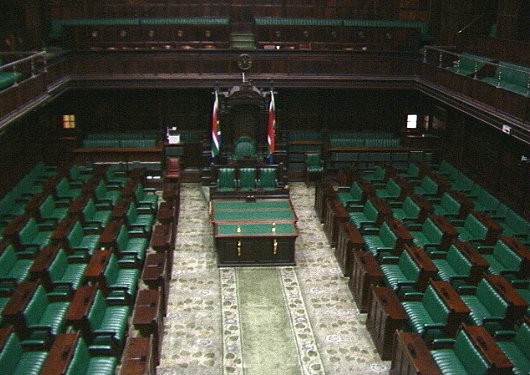
The House of Assembly (always called the Volksraad in Afrikaans, after the legislatures of the Boer republics) was South Africa’s lower chamber, and inherited the Cape House of Assembly’s debating chamber when the Cape Parliament’s home was handed over to the new Parliament of South Africa in 1910. The lower house quite soon decided to build a new addition to the building, and moved its plenary hall to the new wing.
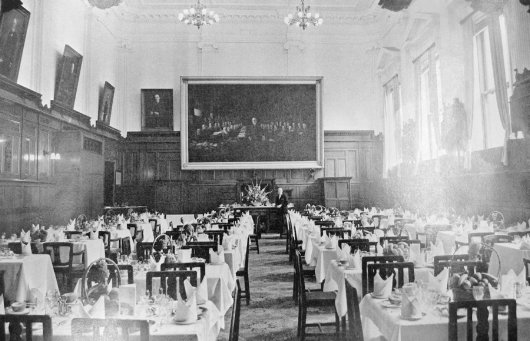
The old chamber was transformed in the 1920s into the Parliamentary Dining Room, its kitchens serving as the flagship of the catering division of South African Railways & Harbours (SARH). A painting of the National Convention — which convened in the room from 1908 until 1909, laying the groundwork for the unification of South Africa — hangs over the restaurant’s entry from the King’s Hall.
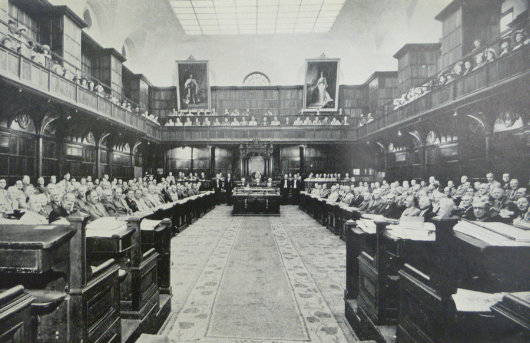
The House of Assembly wing had been added on to the building in 1910, and in 1927 was renovated by Sir Herbert Baker, one of the most influential architects in South Africa, to make it look more like the House of Commons in Westminster. It was in this chamber that so many of the momentous decisions in South African history were made, and it was here that Prime Minister Hendrik Frensch Verwoerd was assassinated by an insane parliamentary messenger in 1966.
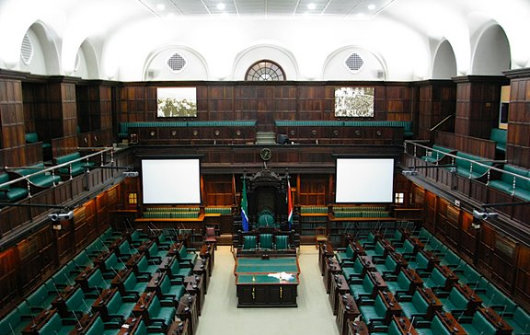
Until the 1927 renovation, the hall had more of a Cape vernacular style, which can still be seen where Baker’s panelling ends and the white-washed ceiling begins.
Under the tricameral constitution, the House of Assembly remained as the chamber representing the white electorate, while the House of Delegates and the House of Representatives were created to represent Indian and Coloured voters respectively. When the interim constitution was introduced after the end of apartheid, all three houses were abolished and the National Assembly was created as the new lower house, though in practical matters the National Assembly (Nasionale Vergadering) is considered the successor to the House of Assembly.
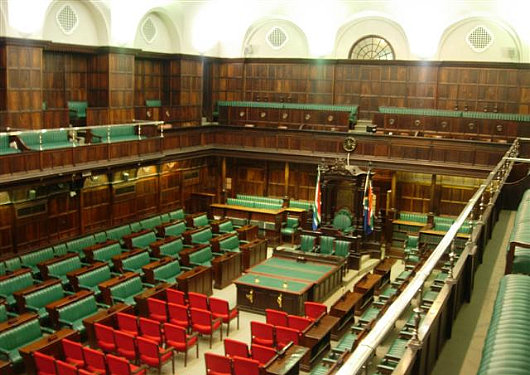
The chamber housed the Assembly until 1994, but is still used as a committee room and for other quasi-governmental gatherings such as the Youth Parliament. (There’s even been a book launch or two in the chamber.) Thank God, there are not currently any plans to rip this room apart like they did the Senate.
Cape Town — Kaapstad
Part I: The Houses of Parliament, Part II: The Senate, Part III: The House of Assembly, Part IV: The National Assembly, Part V: The State Opening of Parliament
Search
Instagram: @andcusack
Click here for my Instagram photos.Most Recent Posts
- Gellner’s Prague December 19, 2024
- Monsieur Bayrou December 18, 2024
- Dempsey Heiner, Art Critic December 17, 2024
- Vote AR December 16, 2024
- Articles of Note: 12 December 2024 December 12, 2024
Most Recent Comments
Book Wishlist
Monthly Archives
Categories



Are there any drawings of the seating arrangment in the current National Assembly? I’m curious as to why the designers kept the British arrangement of government and opposition benches with the National Council of Provinces chamber in a hemicycle form.
Thanks,
JBC